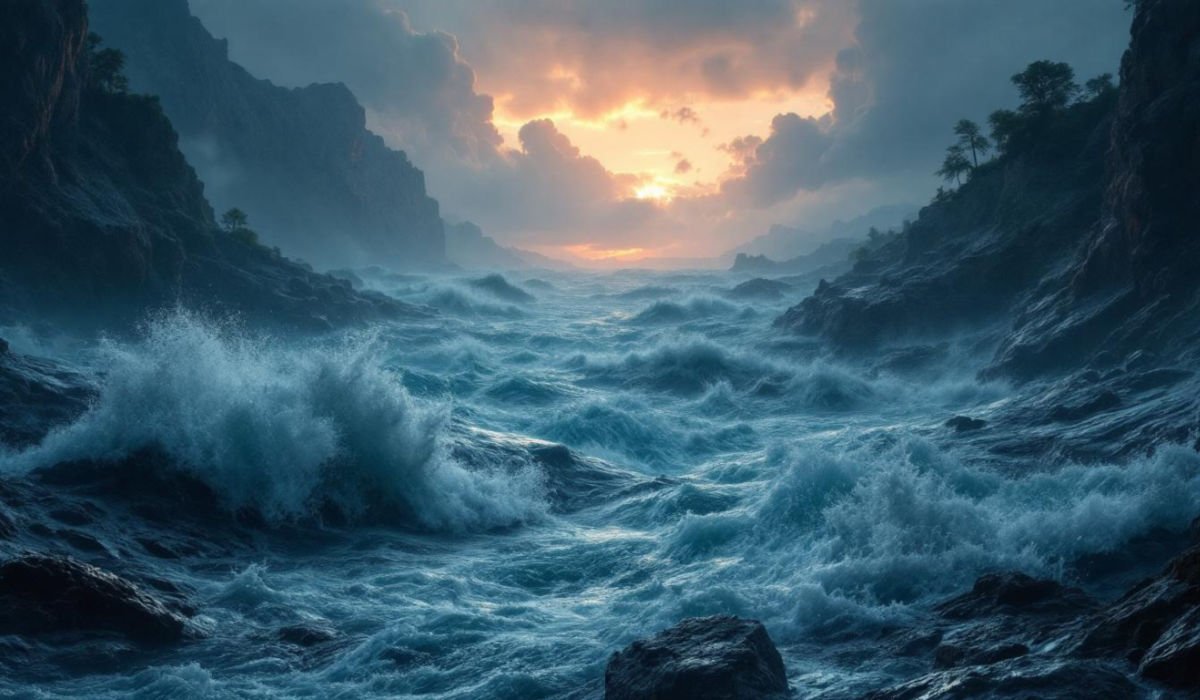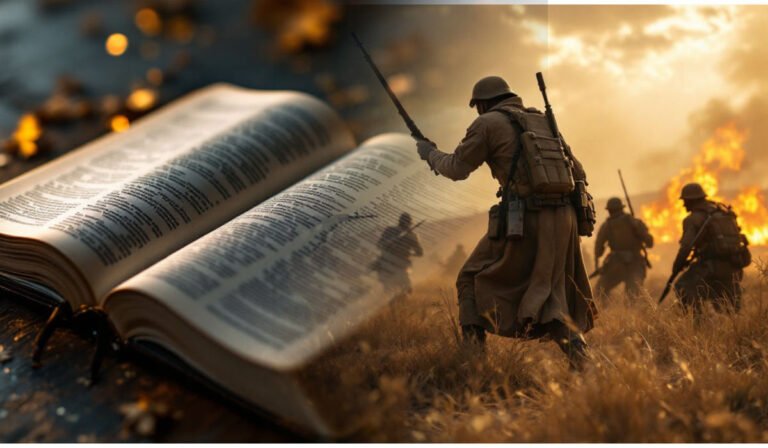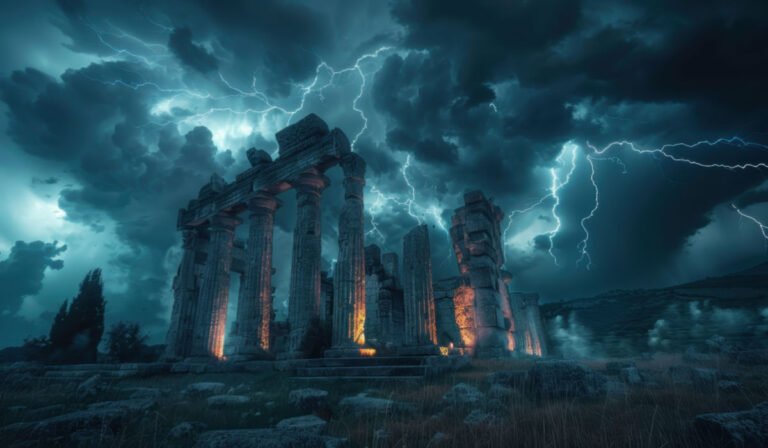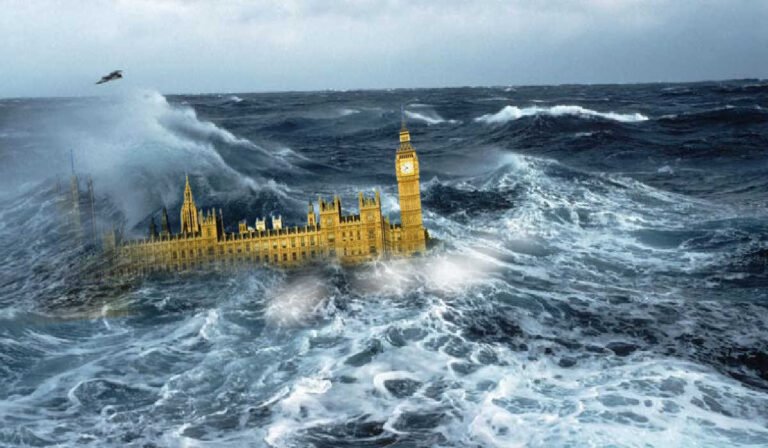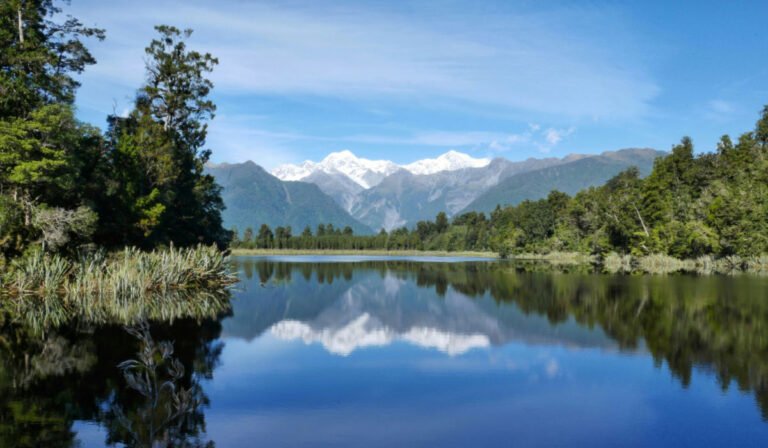The Great Flood—Fact or Fable?
Noah lived with his wife and their three sons. The sons were named Shem, Ham, and Japheth. Each son also had a wife, so there were eight people making up Noah’s close family.
The Command to Build the Ark
God gave Noah an unusual instruction. He told him to build a massive ark—a huge vessel shaped more like a long, tall box than a boat. God said to make it with three levels and fill it with rooms. These rooms would be for Noah’s family, as well as all the animals and food they would need to survive.
God explained that the ark needed to be sealed tightly to keep water out. God warned Noah—‘I am going to bring a flood of waters upon the earth to destroy all flesh in which the breath of life is active from under the heavens. Everything on the earth will perish.’ *
“Here I am bringing the deluge of waters upon the earth to destroy from under the heavens all flesh that has the breath of life. Everything that is on the earth will perish.” (Genesis 6:17)
Building the Ark and Facing Doubt
Noah and his sons listened to God and got to work. The people around them made fun of what they were doing. They carried on with their bad ways and refused to believe what Noah told them about God’s warning.

“People laughed at Noah as he tried to warn them about the coming flood.”
The construction took many years because the ark was enormous. When the building was complete at last, God instructed Noah to gather the animals. Two of some kinds—male and female—were to be brought in. For other types, Noah was told to bring in seven. God also told him to bring every sort of bird into the ark. Noah followed every instruction God gave.
Entering the Ark and Waiting
When all was ready, Noah and his whole family went inside the ark. God closed the door behind them. Inside the huge ark, they waited. Picture the scene—the air heavy with quiet, animals settling down, and the family huddling together, unsure if the great flood would really come as God promised.
Life Outside the Ark
Outside the safety of the ark, people carried on as if nothing would change. They still didn’t believe a flood would ever come. Laughter and disbelief filled the air, but their mood shifted in an instant.
Rain began pouring from the sky, fierce and steady, like water dumped from a bucket. Suddenly, Noah’s warnings became reality. But it was too late to escape. Jehovah had sealed the ark’s door, and no one else could enter.
Water quickly covered the lowlands, turning them into rushing rivers. It uprooted trees, tossed boulders around, and filled the world with a roaring sound. Panic swept over the people as they scrambled to higher ground. Desperation filled their hearts—they wished they had listened to Noah and entered the ark while they still had the chance. Now, the door was closed for good.
Rain fell for forty days and forty nights. Waters kept rising, swallowing hills, and finally, even the highest mountains vanished beneath the waves. God’s word came true. All people and animals outside the ark perished. Only those inside the ark remained safe.
The Ark Floats as the Flood Spreads
Floodwaters swept over everything outside the ark. Inside, Noah and his sons watched the ark rise and float above the chaos. With the rain finally gone, sunlight returned. Looking out, they saw only endless water, a single vast ocean, with the ark drifting alone on its surface.
The Waters Begin to Recede
God sent a wind that made the water go down. After five months, the ark settled on the top of a mountain. Days passed, and Noah and his family could finally see mountain tops poking above the receding waters.
Noah sent out a raven, which kept flying back and forth, unable to find dry ground. He then sent out a dove, but it returned, finding no place to rest. On the second attempt, the dove returned carrying an olive leaf, a sign that land was reappearing. When Noah sent it out a third time, it stayed away, having found a home on dry land.
Leaving the Ark
It was then that God spoke to Noah—“Go out of the ark, you and your wife and your sons and their wives with you.”
They had stayed inside for more than a year, so we can imagine their relief and happiness as they stepped out, finally able to breathe fresh air, grateful to be alive!
Noah’s First Act After the Flood
After the floodwaters fell away, and the ark came to rest, Noah and his family stepped out onto dry land. The first thing they chose to do was offer a gift to Jehovah. Noah presented animals as a thank you for protecting his family during the flood.
Jehovah accepted this offering. He made a promise in return. He told Noah he would never again let a flood destroy the whole earth.
The Start of a New Life
As the ground dried, Noah and his loved ones began their lives outside the ark. Jehovah blessed them and gave clear instructions—’You ‘must have many children. You must increase in numbers until people live all over the earth.’
A Sign of Jehovah’s Promise
News of the great flood would spread. Some people might worry about another disaster like it. To comfort them, Jehovah gave a reminder of his promise. He placed a rainbow in the sky.
The Meaning of the Rainbow
Jehovah spoke these words—

“I promise that never again will all people and animals be destroyed by a flood. I am putting my rainbow in the clouds. And when the rainbow appears, I will see it and remember this promise of mine.”
When we notice a rainbow stretch across the clouds, it helps us remember Jehovah’s promise that He will never destroy the world with a flood again. The rainbow stands as a sign of that promise, shining as a reminder to us all.
Searching for the Ark
Since the 1800s, many people have gone to the mountains of Ararat hoping to find the ark. These peaks stand out across the landscape, with the tallest reaching 16,950 feet [5,165 m] and the other rising to 12,840 feet [3,914 m]. The higher mountain remains covered in snow all year.
After the Flood, shifting weather patterns would have buried the ark under layers of snow. Some people are convinced that the ark is still there, hidden deep inside the glacier, and they believe that sometimes the ice has melted just enough for small sections of the ark to come into view.
The book In Search of Noah’s Ark shares the story of a local Armenian named George, who claimed he climbed Mount Ararat and saw the ark in both 1902 and 1904. He said that on his first trip up the mountain, he managed to climb onto the ark itself. He remembered, “I stood up straight and looked all over the ship. It was long. The height was about forty feet [12 m].” Later, recalling his second visit, he described, “I didn’t see any real curves. It was unlike any other boat I have ever seen. It looked more like a flat-bottomed barge.”
Between 1952 and 1969, Fernand returned to Mount Ararat several times. During his third trip, he climbed to the bottom of a glacier’s crevasse and found a block of dark wood frozen in the ice. He said, “It must have been very long and perhaps still attached to other parts of the ship’s framework. I could only cut along the grain until I split off a piece about five feet [1.5 m] long.”
Professor Richard, who was one of several experts who looked at this sample, said, “The Navarra wood sample is a structural beam and impregnated with bituminous pitch. It has mortise and tenon joints. And it’s definitely hand-hewn and squared. The wood’s estimated age ranges from four to five thousand years.“
Learning from the Flood Account
We live in a time marked by natural disasters, violence, greed, corruption and a total lack of morals. Reading the account of the Flood found in Genesis chapters 6 to 8 has deep meaning. When we think about why that great flood happened—the constant wrongdoing that brought sadness to God—we find a state of ‘déjà vu‘, do we not? This should give us real guidance for our own lives and what lies ahead.
God’s judgement will soon come against the current wicked world. Yet, there is hope. There will be people who survive. We can be among them if we listen carefully to Peter’s advice. He wrote:
“. . . and that by those means the world of that time suffered destruction when it was flooded with water. 7 But by the same word the heavens and the earth that now exist are reserved for fire and are being kept until the day of judgement and of destruction of the ungodly people. 8 However, do not let this escape your notice, beloved ones, that one day is with Jehovah as a thousand years and a thousand years as one day. 9 Jehovah is not slow concerning his promise, as some people consider slowness, but he is patient with you because he does not desire anyone to be destroyed but desires all to attain to repentance. 10 But Jehovah’s day will come as a thief, in which the heavens will pass away with a roar, but the elements, being intensely hot, will be dissolved, and the earth and the works in it will be exposed. 11 Since all these things are to be dissolved in this way, consider what sort of people you ought to be in holy acts of conduct and deeds of godly devotion, 12 as you await and keep close in mind the presence of the day of Jehovah, through which the heavens will be destroyed in flames and the elements will melt in the intense heat.”
—2 Peter 3:6-12.
Staying Focused on Jehovah’s Day
Will we keep Jehovah’s day at the front of our minds? If we do and let his will shape our choices, we can look forward to rich rewards. People who make Jehovah happy can believe in the promise Peter spoke of:
“There are new heavens and a new earth that we are awaiting according to [God’s] promise, and in these righteousness is to dwell.”
—2 Peter 3:13.
Let’s keep these words close to our hearts. If we stay faithful and live in a way that pleases God, we can be part of a world where goodness will last forever. We have the chance to help build a future where what is right fills the earth for all time!


